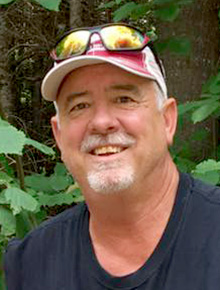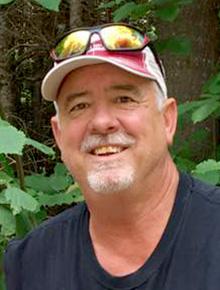
The headline of the Star Herald a few weeks back announced that a nearby community’s drinking water had levels of magnesium that were five times higher than what was safe for infants.
It really doesn’t matter where in the state you live, this is becoming a far too frequent headline. There is a very old saying that “whiskey is for drinking and water is for fighting,” and water issues are now one of the most controversial debates of our lifetime. The fact that water is not an infinite resource is totally missed by a very large portion of the human population.
About 70 percent of all of the fresh water used on planet Earth is used for irrigation. Just think about that fact for a minute. It is sobering to me. I like to eat as much as the next guy and maybe even more, so irrigation used for food is not a problem in my eyes.
Water used to irrigate lawns, on the other hand, is a whole other issue.
A huge metropolitan city in the desert Southwest required that all non-used green spaces need to be replaced with material that does not need to be watered — hotel, motel front approaches for an example.
After the law was in place, city officials figured it saved the equivalent of 11.5 gallons of water per person per day and that was for a population of millions of folks. For 10 million people that equates to 115 billion gallons per day.
Lake Mead supplies millions of people in the arid Southwest and they have had to lower the intake on that reservoir three times in the past 15 years.
The thirst for never-ending water is growing, and supply is not keeping up with demand. States are now fighting over who has first rights to water resources.
Minnesota is the land of 10,000 lakes, and yet in southwest Minnesota my community could not even run a garden hose for over three years about five years ago.
I never really ever figured out why conserving water resources was not a continual thing. When it rains a lot, then we are allowed to waste a lot of water.
Why would we do that? Why not conserve water all the time?
As an example of people’s attitudes about water, I was sitting in a bar with an in-law a few years back, and at 6 p.m. he left, drove home 12 miles, turned on the lawn sprinkler and rushed back. How bad do you have to want to water your lawn to do that? That was just plain dumb.
Another aspect of water resources I advocate for, ranked evenly with water conservation, is water resource protection.
How do you go about protecting current water resources? An important first step is to consider wellhead protection areas, which are mapped out by the Minnesota Pollution Control Agency as the most critical areas to avoid water contamination.
So how do you protect these areas? The No. 1 way is to cover them with undisturbed vegetation. By rotating wellhead protection areas away from row crop production to perennial grass cover, you do several important things.
First, there is no longer an herbicide or pesticides or manure applied to these acres. In some cases, wetlands are restored to allow water to filter through these areas with the water coming out the other end much cleaner than when it entered.
Pollutants are absorbed by the plants that live there, if the pollutant load does not overwhelm the basin.
How do you plant grass in these critical protection areas without a huge cost?
One of my favorite answers, call it what you like, is citizen-owned lands, public lands or wildlife management areas.
These areas provide permanent grass cover, protect water, reduce erosion, reduce flooding, benefit pollinators and non-game species, sequester carbon and even provide a hunter a place to possibly shoot a rooster.
These citizen-owned lands also pay the county money to replace the private lands property taxes, in many cases more than when the land was in private ownership.
If you are a fan of protecting water resources, you need to be a vocal and staunch supporter of public-owned lands. If not for yourself, then for your kids or grandkids. What happens when you turn on the tap and no water comes out?
Scott Rall, Worthington, is a habitat conservationist, avid hunting and fishing enthusiast and is president of Nobles County Pheasants Forever. He can be reached at scottarall@gmail.com or on Twitter @habitat champion.



